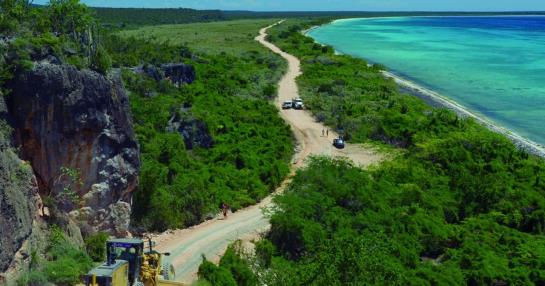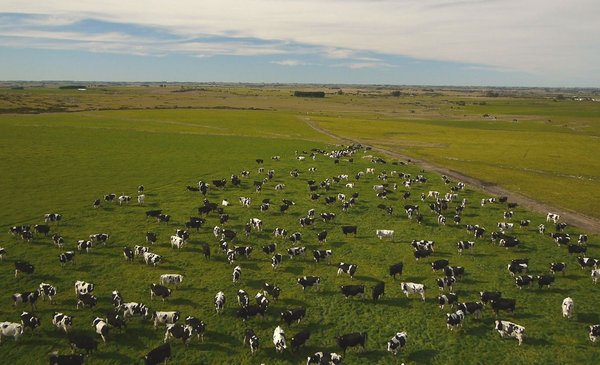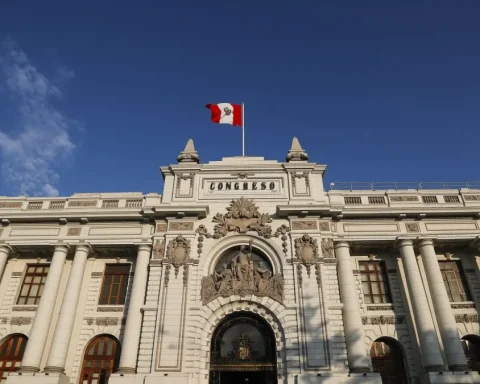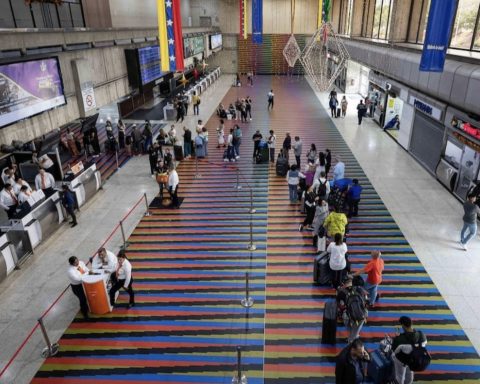At the end of last year, President Luis Abinader ordered through Decree 724-20, the constitution of Pro-flints, a public trust whose objective is to execute the necessary infrastructures for the Turistic development of that province.
The plan of Turistic development from Cabo Rojo, flints It covers a total area of approximately 38 million square meters, located between protected areas and will include the construction of luxury and ecological hotels, with sustainable energy generation capacity, in addition to the construction of affordable housing for employees in the area and the project. .
It consists of four phases in 10 average years of implementation with an estimated investment of US$2,245 million for 12,000 bedrooms.
The first stipulates an investment of US$1,300 million for the lifting of 4,700 bedrooms, the international Airport, shopping center and all basic infrastructure works, such as: construction of aqueduct, treatment plant, electrical transmission system, among others. In addition, it will have a botanical walk, commercial area, golf area, villas, buffer, airport and water park.
Eight hotels are contemplated to start their operation in the opening of the first phase, for which the hotel chains Hilton, Marriott, Sunwing, AmResorts, Iberostar Group and Karisma Hotels & Resort have already signed a letter of commitment.
All the necessary infrastructures for the successful development of the area will be adapted, the existing circuit of natural attractions will be promoted, where visitors to the area will be able to explore ecosystems under a model of sustainability, such as: Hoyo de Pelempito, Laguna de Oviedo, Isla Beata, Bahía de las Águilas and others. All this, under a scheme of environmental protection, respect for protected areas and national parks.
The project will incorporate a panoramic path with viewpoints, the recovery of the old Cabo Rojo aerodrome runway, converted into a promenade that will connect a botanical walk with the current pier, this will be an area of commercial tourist attraction where a marina and club will be integrated nautical, with amenities and shops.
Work on the basic infrastructure and services required for the start of construction of the hotel infrastructure, which is expected to start in the middle of this year, is already well advanced.
In the Master Plan that was presented during the 42nd edition of the International Tourism Fair (Fitur), in Madrid, Spain, it is reported that the land for the construction of the airport of flints They are already clearly identified in the demarcation process and wind studies are being carried out to define the location of the landing strips.
“The Government has committed itself and has already begun to execute, with the leadership of the General Directorate of Public-Private Partnerships (DGAPP), the infrastructure works that allow the development of this new and spectacular tourist pole that, with its nearly 20,000 direct jobs and more than 50,000 indirect jobs will come to create opportunities that will reduce poverty in the region”, he indicates.
Characteristics of the province
flints is a province located in the southern region of the Dominican Republic and right on the southwestern border with Haiti. Its main economic activities are ranching, agriculture, mining and fishing, and it has great tourism potential, which has not yet been developed.
68% of the territory of this province is declared a protected area, noting that this area is a Biosphere Reserve according to UNESCO, and the “Jaragua Wetlands” are Ramsar sites. These characteristics force development to be focused on sustainable tourism, which is based on environmental, socio-cultural and economic sustainability.
The tourism potential of the province has been of great interest and has been the subject of different studies and development proposals, but it is President Luis Abinader, in his current administration, who has assumed the non-negotiable commitment to promote the launch of the Turistic development from flints, assuming an inclusive, sustainable model with a great economic impact.
The plan of Turistic development from Cabo Rojo, flints It covers a total area of approximately 38 million square meters, located between protected areas. It is a unique location, because the beauties of its crystalline beaches, the majesty of the arid zones, the diversity of endemic and native species, the proximity to natural attractions, such as the Romeo wells, the Las Palmas stream, the wetlands and mangroves of Jaragua, the cliffs of Cabo Rojo, the Cueva de los Pescadores, la Cueva beach and Bahía de las Águilas, the characteristic geographical accidents of the area, are part of the charm of the “Deep South”.
Among the modalities of sustainable tourism that are likely to be developed in Cabo Rojo are nature tourism, ecotourism, soft adventure tourism, wellness tourism, among others.
The plan of Turistic development of Cabo Rojo, has all the preliminary technical engineering studies (geological, topographical, hydrological, including the study of water sources) and forecasts of the effects of climate change. The investigations and studies for this Master Plan have been worked on in coordination with all the competent institutions, social actors of the region and conservation groups.
For the consolidation of the new tourist destination, the schematic design of the International Airport from flints, which is intended to be built in the town of Manuel Goya located about 20 minutes from Cabo Rojo, flints.
The recognition of the landscape has been one of the fundamentals for the preliminary architectural design, since the landscaping proposal enhances the flora and fauna of the place, proposing the conservation of endemic and native species, as characteristic elements of the development.
The promotion of the conservation of biodiversity, the promotion of an inclusive economy and cultural wealth, the organization of the territory in synchrony with the natural and social environment, the consolidation and diversification of the tourist offer and the creation of an infrastructure system for the Turistic development of low impact, are the essence in the implementation of this project that will be executed in four phases.
It is important to note that Cabo Rojo, flints, will be the first tourist destination in the Caribbean developed from scratch under a public-private partnership, with a luxury offer based on sustainable tourism, taking care of every detail to offer tourists an ecological and adventure experience.















